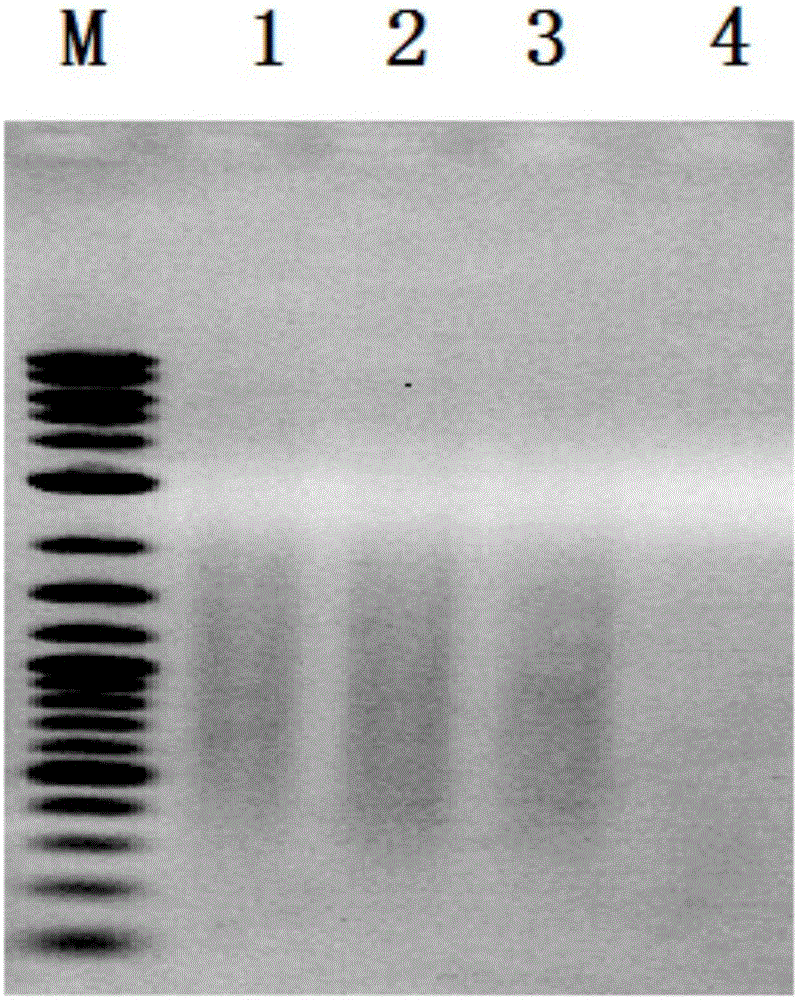Method for quickly separating and detecting crosslinking DNA in paraffin-embedded tissue sample
A technology for tissue samples and paraffin embedding, which is applied in the direction of recombinant DNA technology, DNA preparation, microbial determination/inspection, etc., and can solve the problems of low recovery efficiency, time-consuming, unfavorable large sample screening, etc.
- Summary
- Abstract
- Description
- Claims
- Application Information
AI Technical Summary
Problems solved by technology
Method used
Image
Examples
Embodiment 1
[0030] Operation method:
[0031] 1) Take 1 / 8~1 piece of paraffin-embedded sample and add ddH 2 O, cover, 70°C, 5-10min, discard the supernatant;
[0032] 2) Add 1-5μL 5mg / mL proteinase K, add ddH 2 0 to 10 μL, 55°C, 30min;
[0033] 3) Add 10 μL of 10% Chelex100 microbeads, shake vigorously for 10 seconds, and centrifuge at 300×g;
[0034] 4) High temperature vibration incubation, the conditions are: 95°C, 1300 rpm, 10min;
[0035] 5) Centrifugation, the centrifugal force is 3000-14000×g, and the room temperature is 10sec;
[0036] 6) Transfer 20 μL of supernatant to a new centrifuge tube, add 2 μL of RNAseA, and 4 μL of 6× Loading Buffer, and mix;
[0037] 7) Gel analysis with 1.2% gel.
PUM
 Login to View More
Login to View More Abstract
Description
Claims
Application Information
 Login to View More
Login to View More - R&D
- Intellectual Property
- Life Sciences
- Materials
- Tech Scout
- Unparalleled Data Quality
- Higher Quality Content
- 60% Fewer Hallucinations
Browse by: Latest US Patents, China's latest patents, Technical Efficacy Thesaurus, Application Domain, Technology Topic, Popular Technical Reports.
© 2025 PatSnap. All rights reserved.Legal|Privacy policy|Modern Slavery Act Transparency Statement|Sitemap|About US| Contact US: help@patsnap.com

